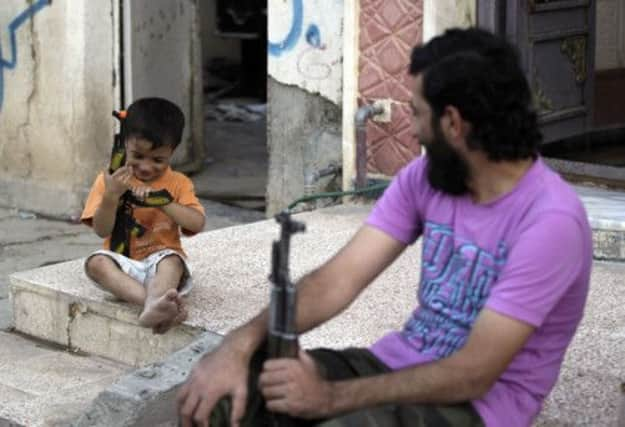Syria: US no-fly zone ‘would cost $1bn a month’


In a letter to two senators, chairman of the Joint Chiefs of Staff, General Martin Dempsey outlined the risks, costs and benefits of more aggressive US military action as president Barack Obama’s administration weighs the next steps in helping the opposition battling the forces of president Bashar al-Assad.
The sectarian conflict has killed an estimated 93,000 and displaced millions, prompting more calls in the US Congress for greater intervention.
Advertisement
Hide AdAdvertisement
Hide AdGen Dempsey said the decision to use force in Syria was not one to be taken lightly.
“It is no less than an act of war,” he wrote. And once that decision is made, he said the US has to be prepared for what may come next.
“Deeper involvement is hard to avoid,” he said.
Senator Carl Levin, chairman of the armed services committee, and Senator John McCain had pressed Gen Dempsey for his personal assessment before moving ahead with his nomination to another two-year term.
Mr McCain and Mr Levin have been pushing for a more aggressive response by Mr Obama’s administration to the Syrian crisis.
Mr Dempsey spelled out costs, ranging from millions to billions of dollars, for options ranging from training and arming vetted rebel groups, conducting limited strikes on Syria’s air defences and creating a no-fly zone or buffer zone.
The American military leader said while these steps would help the opposition and pressure Mr Assad’s government, “we have learned from the past ten years, however, that it is not enough to simply alter the balance of military power without careful consideration of what is necessary in order to preserve a functioning state.”
Gen Dempsey’s reference was to the wars in Iraq and Afghanistan. He said the creation of a no-fly zone would neutralise Syria’s air defences. It would require “hundreds and hundreds of ground and sea-based aircraft, intelligence and electronic warfare support, and enablers for refuelling and communications. Estimated costs are $500m initially, averaging as much as $1 billion a month over the course of a year.”
He said that while it would probably result in the “near total elimination” of Syria’s ability to bomb opposition strongholds, the risks would be the loss of US aircraft.
Advertisement
Hide AdAdvertisement
Hide AdThat would mean recovery efforts for shot-down American personnel.
He added that such a step “may also fail to reduce the violence or shift the momentum because the regime relies overwhelmingly on surface fires –mortars, artillery and missiles”.
Gen Dempsey said the creation of a buffer zone, most likely a geographic area across the border with Turkey or Jordan, would give opposition forces a place to organise and train. Such a move would require thousands of US ground forces, even stationed outside Syria, to back up those defending the zones.
“We must also understand risk – not just to our forces, but to our other global responsibilities. This is especially critical as we lose readiness due to budget cuts and fiscal uncertainty. Some options may not be feasible in time or cost without compromising our security elsewhere,” he wrote.
Gen Dempsey said he has provided president Obama with options for the use of US military force in Syria but added: “It would be inappropriate for me to try to influence the decision with an opinion about what kind of force we should use.”